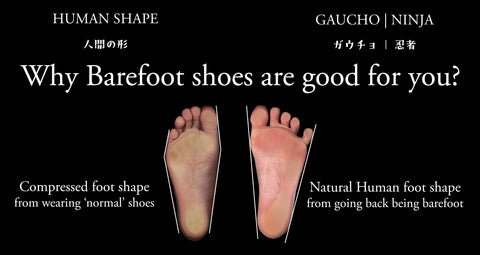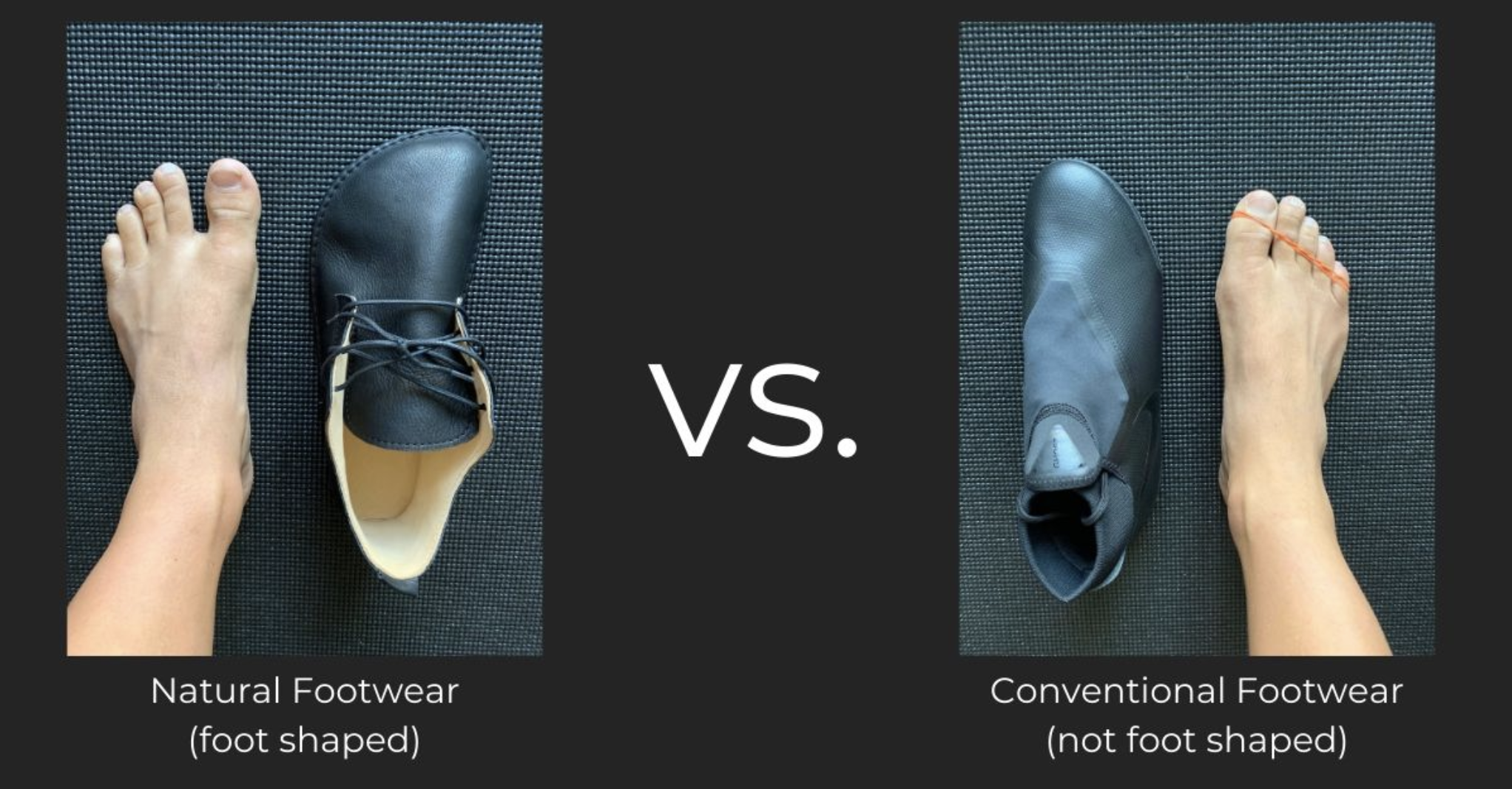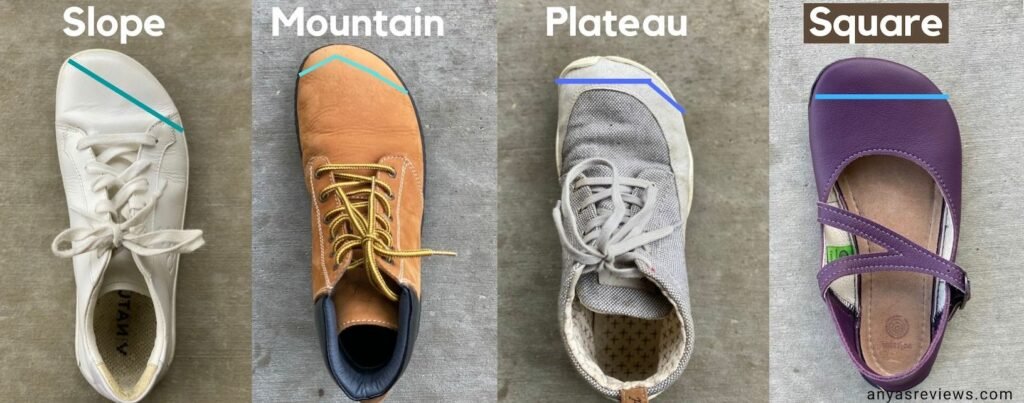Yes, barefoot shoes can be healthy for feet. They promote natural movement and strengthen foot muscles.
But, they may not be suitable for everyone. Barefoot shoes have gained popularity in recent years. They mimic the feeling of walking barefoot while providing some protection. Advocates claim these shoes can improve foot health and posture. Critics argue that they might not offer enough support, especially on rough terrain.
Understanding the benefits and potential drawbacks is crucial. This blog will explore the science behind barefoot shoes. We’ll discuss how they affect foot health and who might benefit from wearing them. By the end, you’ll have a clearer view of whether barefoot shoes are the right choice for you.

Credit: gaucho.ninja
Introduction To Barefoot Shoes
Barefoot shoes have gained popularity in recent years. Many people wonder if they are healthy for feet. These shoes aim to mimic the natural feel of walking barefoot. They offer a minimalist design, which often includes a thin sole and wide toe box. This design allows for natural movement and better ground feel. Let’s explore what barefoot shoes are and their history.
What Are Barefoot Shoes?
Barefoot shoes are designed to provide a natural walking experience. They come with minimal padding and a flexible sole. This allows the foot to move freely. The sole is thin and flat, giving a close-to-ground feel. The toe box is wide, allowing toes to spread naturally. This design helps improve balance and stability. They are often made with lightweight and breathable materials.
History And Evolution
The concept of barefoot shoes is not new. Ancient civilizations walked and ran barefoot or with minimal footwear. Over time, modern shoes evolved with more padding and support. This led to a disconnect from natural foot movement. In the early 2000s, the barefoot movement began to gain traction. Researchers and athletes started promoting the benefits of natural foot movement. Companies began designing shoes that mimic the barefoot experience. Today, barefoot shoes are popular among runners and everyday users.
| Feature | Traditional Shoes | Barefoot Shoes |
|---|---|---|
| Sole Thickness | Thick and cushioned | Thin and flexible |
| Toe Box | Narrow | Wide |
| Heel-to-Toe Drop | High | Low |
Benefits Of Barefoot Shoes
Many people are switching to barefoot shoes for their health benefits. These shoes mimic natural foot movement, promoting better foot health. Let’s explore the main benefits of barefoot shoes.
Improved Foot Strength
Barefoot shoes allow your feet to move freely. This movement strengthens the muscles in your feet. Traditional shoes often restrict foot movement. This can make your foot muscles weak over time.
With barefoot shoes, your feet work harder. They adapt to the ground and build strength. Stronger feet can help prevent injuries. They also improve your overall foot health.
Enhanced Balance And Coordination
Barefoot shoes improve your balance. They let your feet feel the ground better. This better ground feel helps you react quickly. You gain better control over your movements.
Barefoot shoes also enhance coordination. Your toes can spread out and grip the ground. This natural grip boosts stability. As a result, you become more agile.
| Benefits | Description |
|---|---|
| Foot Strength | Strengthens foot muscles and prevents injuries. |
| Balance | Improves reaction and control. |
| Coordination | Enhances stability and agility. |
Potential Drawbacks
Some find barefoot shoes uncomfortable due to lack of cushioning. They may also increase the risk of injury for unaccustomed feet.
Barefoot shoes have gained popularity, but they come with certain risks. It’s important to understand these potential drawbacks before making a switch.
Risk Of Injury
Barefoot shoes offer minimal support and cushioning. This can increase the risk of injury. Feet are more exposed to sharp objects on the ground. Without proper cushioning, the impact on joints can be higher. This is especially true for individuals with existing foot problems. The absence of arch support can also lead to strain. Injuries like plantar fasciitis can become more common.
Transition Period Challenges
Switching to barefoot shoes is not immediate. Feet need time to adjust to the new footwear. Initially, there may be discomfort and pain. Muscles and tendons need to adapt to the lack of support. This transition period can be challenging and frustrating. It requires patience and gradual adaptation. Skipping this transition can lead to injuries. Building strength in foot muscles is crucial during this time.
“`

Credit: www.thepathpt.com
Scientific Research
Scientific research on barefoot shoes has grown in recent years. Many studies seek to understand their impact on foot health and biomechanics. Below, we explore the latest findings.
Studies On Foot Health
Several studies have focused on the health of feet when wearing barefoot shoes. Research indicates that barefoot shoes can strengthen foot muscles. This is because they allow natural movement. Conventional shoes often restrict this movement, leading to weaker muscles.
Another study found that barefoot shoes can improve foot alignment. This can reduce the risk of injuries. Proper alignment helps distribute weight evenly, which is beneficial for overall foot health.
Biomechanics Analysis
Biomechanics is the study of movement in living beings. Researchers have analyzed how barefoot shoes affect walking and running. They found that barefoot shoes promote a more natural gait. This can lead to fewer injuries compared to traditional footwear.
Another key finding is that barefoot shoes can help improve balance. This is due to the closer connection between the foot and the ground. Enhanced balance can reduce the likelihood of falls and related injuries.
Overall, scientific research suggests barefoot shoes offer several health benefits. They strengthen muscles, improve alignment, and promote better movement patterns.
Comparing Traditional And Barefoot Shoes
When deciding between traditional and barefoot shoes, it’s crucial to understand their differences. Each type of footwear offers unique benefits and drawbacks. Let’s dive into the specifics of comfort, support, and posture impact.
Comfort And Support
Traditional shoes often come with cushioned soles. This padding provides ample support and comfort for long hours of wear. They are designed to protect your feet from impact, reducing the risk of injury.
In contrast, barefoot shoes have minimal padding. They allow your feet to move more naturally. This can lead to better muscle activation and strength over time. Yet, they might be less comfortable initially, especially for those used to traditional shoes.
| Feature | Traditional Shoes | Barefoot Shoes |
|---|---|---|
| Padding | High | Low |
| Support | Strong | Minimal |
| Natural Movement | Restricted | Enhanced |
Impact On Posture
Traditional shoes with their elevated heels can alter your posture. They may cause you to lean forward slightly. Over time, this can lead to back and hip issues.
Barefoot shoes promote a more natural stance. With no heel elevation, your weight is evenly distributed. This can improve your posture and reduce strain on your lower back.
Consider what you value more: immediate comfort or long-term posture benefits. Your choice of footwear can make a significant difference.

Credit: anyasreviews.com
Choosing The Right Barefoot Shoes
Barefoot shoes can benefit foot health by promoting natural movement. They strengthen muscles and improve balance. Choose shoes that fit well and provide adequate support.
Barefoot shoes are gaining popularity. They promise a more natural way to walk. But, not all barefoot shoes are the same. The right pair can support your feet well. So, choosing the right barefoot shoes is crucial.
Factors To Consider
First, check the flexibility. A good barefoot shoe bends easily. It allows your feet to move naturally. Also, look at the toe box. It should be wide. This gives your toes room to spread out.
Next, consider the sole thickness. A thin sole lets you feel the ground. It helps improve balance. But, make sure it’s durable. Lastly, think about the weight. Lightweight shoes make walking easier.
Popular Brands
Several brands offer quality barefoot shoes. Vivobarefoot is one. They are known for their flexible and durable designs. Another is Xero Shoes. They focus on comfort and natural movement.
Merrell is also popular. They offer a range of barefoot shoes. Vibram FiveFingers are unique. They have individual toe slots. This design mimics being barefoot closely.
Choosing the right brand depends on your needs. Research and try on different pairs. Your feet will thank you.
“`
Transitioning To Barefoot Shoes
Switching to barefoot shoes can be a rewarding journey for your feet. It allows them to move and flex naturally. This transition, though beneficial, requires a careful and gradual approach. Here, we offer some essential tips and highlight common mistakes to avoid for a smooth transition.
Tips For Beginners
Starting with barefoot shoes can be exciting. Follow these tips to ease your transition:
- Start Slow: Wear your barefoot shoes for short periods initially. Gradually increase the time.
- Listen to Your Body: Pay attention to any discomfort or pain. Adjust usage accordingly.
- Strengthen Your Feet: Engage in foot-strengthening exercises. Simple toe curls or arch lifts can help.
- Choose the Right Surface: Begin walking on soft surfaces like grass or sand.
- Mix and Match: Alternate between barefoot and regular shoes during the transition phase.
Common Mistakes To Avoid
Many beginners make mistakes that can lead to discomfort or injury. Here are some common pitfalls:
| Mistake | Explanation |
|---|---|
| Going All In | Wearing barefoot shoes all day from the start can stress your feet. Gradual adaptation is key. |
| Ignoring Pain | Pushing through pain can lead to injury. Always listen to your body. |
| Wrong Fit | Ill-fitting shoes can cause blisters or discomfort. Ensure your barefoot shoes fit well. |
| Skipping Foot Exercises | Strengthening exercises are crucial. They prepare your feet for the new demands. |
| Running Too Soon | Avoid running in barefoot shoes until your feet are fully adapted. Begin with walking. |
Expert Opinions
The debate around barefoot shoes and their impact on foot health continues. Many people seek expert opinions to make informed choices. This section provides insights from podiatrists and athletes.
Podiatrists’ Views
Podiatrists often have mixed feelings about barefoot shoes. Some believe they can help strengthen foot muscles. They argue that these shoes allow feet to move naturally.
Others worry about the lack of support. Barefoot shoes don’t offer the same cushioning as traditional footwear. This can be a concern, especially on hard surfaces.
Overall, podiatrists advise a gradual transition. They recommend starting with short walks. Over time, you can increase the distance. This helps your feet adapt without injury.
Athletes’ Experiences
Athletes have different experiences with barefoot shoes. Some runners find them beneficial. They report fewer injuries and better balance.
Other athletes struggle with the change. They find it hard to adjust. Their feet may feel sore or tired at first.
Listening to your body is key. If barefoot shoes cause pain, reconsider their use. Many athletes suggest alternating between barefoot and regular shoes. This offers a balanced approach.
Personal Stories
Personal stories about barefoot shoes offer valuable insights. They reveal how these shoes impact real lives. Let’s explore some experiences shared by individuals who switched to barefoot shoes.
Success Stories
John, a marathon runner, struggled with foot pain. He switched to barefoot shoes. Within weeks, his pain eased. He felt more connected to the ground. His running form improved. John now runs pain-free.
Mary, a teacher, spent hours on her feet. She often felt discomfort. She tried barefoot shoes. They provided relief. She noticed better posture. Her feet grew stronger. Mary recommends barefoot shoes to her colleagues.
Challenges Faced
Emma faced difficulties initially. She felt discomfort transitioning from regular shoes. Her feet needed time to adjust. She experienced soreness. Over time, her feet adapted. She now enjoys the benefits.
Tom had balance issues at first. He felt unstable in barefoot shoes. He took it slow. He practiced walking on different surfaces. Gradually, his balance improved. Tom now moves with confidence.
These personal stories highlight both success and challenges. They provide a balanced view. Consider your own needs and experiences. Make an informed choice about barefoot shoes.
Frequently Asked Questions
What Are Barefoot Shoes?
Barefoot shoes are designed to mimic the feeling of walking without shoes. They have thin, flexible soles that allow natural foot movement.
Do Barefoot Shoes Improve Foot Health?
Yes, barefoot shoes can improve foot health. They promote natural movement, strengthen foot muscles, and improve balance and posture.
Are Barefoot Shoes Good For Running?
Barefoot shoes can be good for running. They encourage a natural running gait, which can reduce injury risk and improve performance.
Can Barefoot Shoes Help With Foot Pain?
Barefoot shoes may help alleviate foot pain. They allow natural foot movement, which can reduce stress and discomfort.
Conclusion
Barefoot shoes can be healthy for your feet. They promote natural movement. This can improve balance and strength. But, they are not for everyone. Some people need more support. It’s important to listen to your body. Transition slowly if trying barefoot shoes.
Consult a doctor if unsure. Every foot is different. Choose what feels best for you. Healthy feet are key to overall well-being. Happy walking!